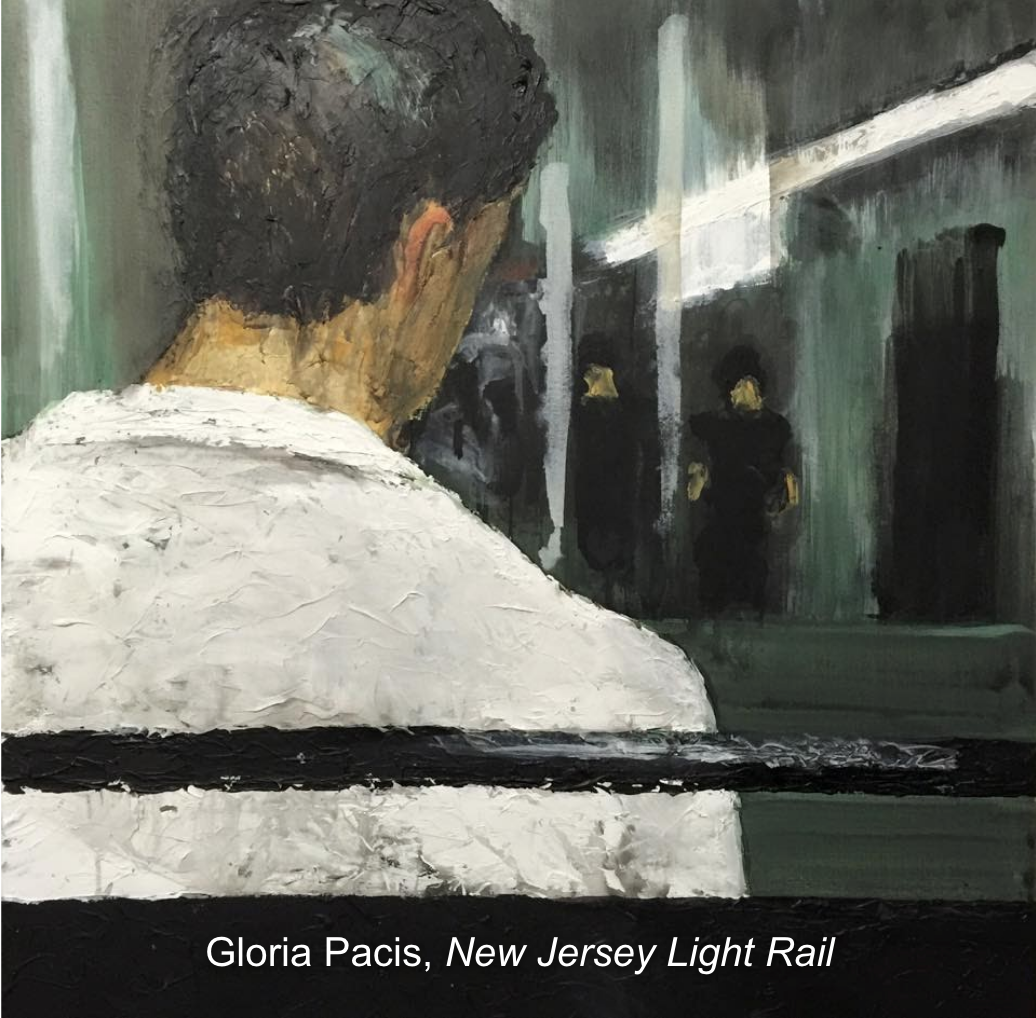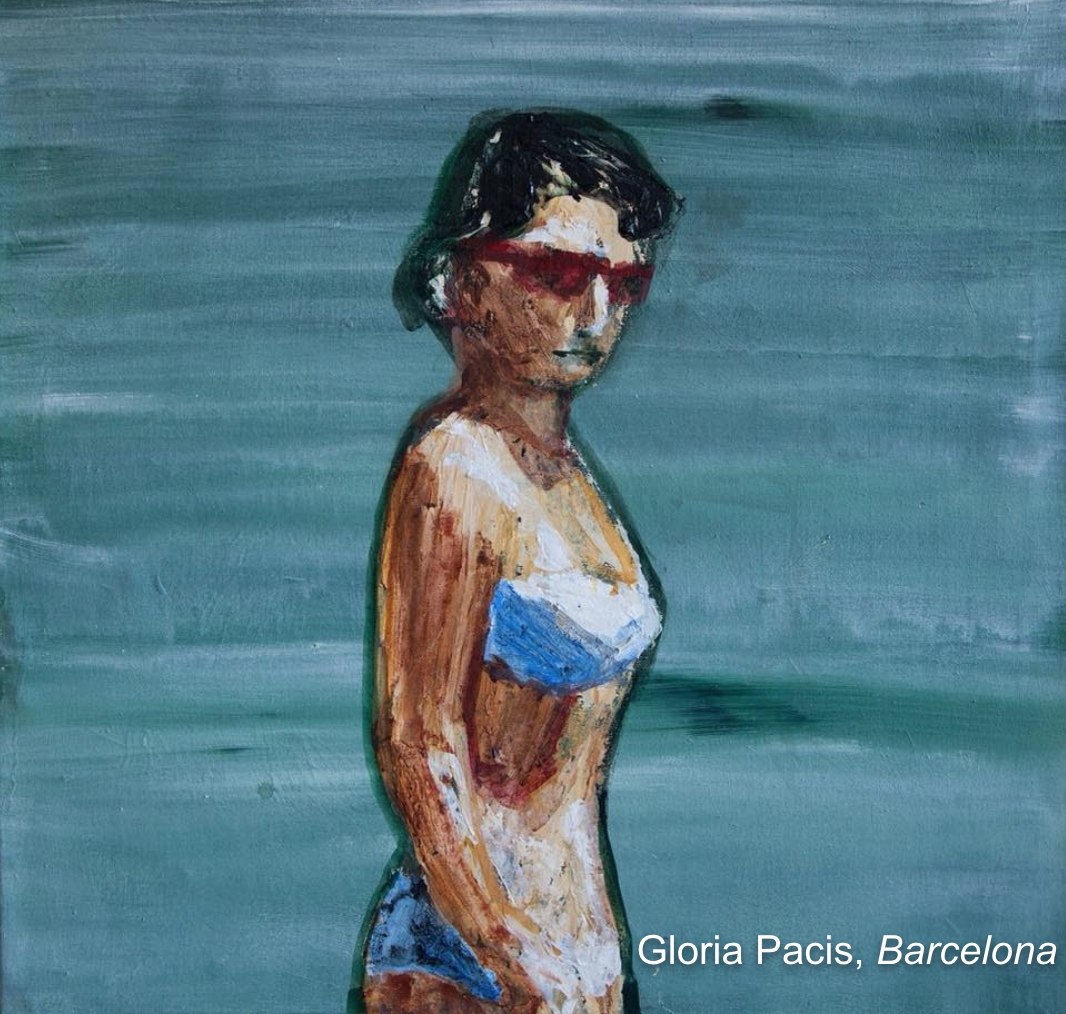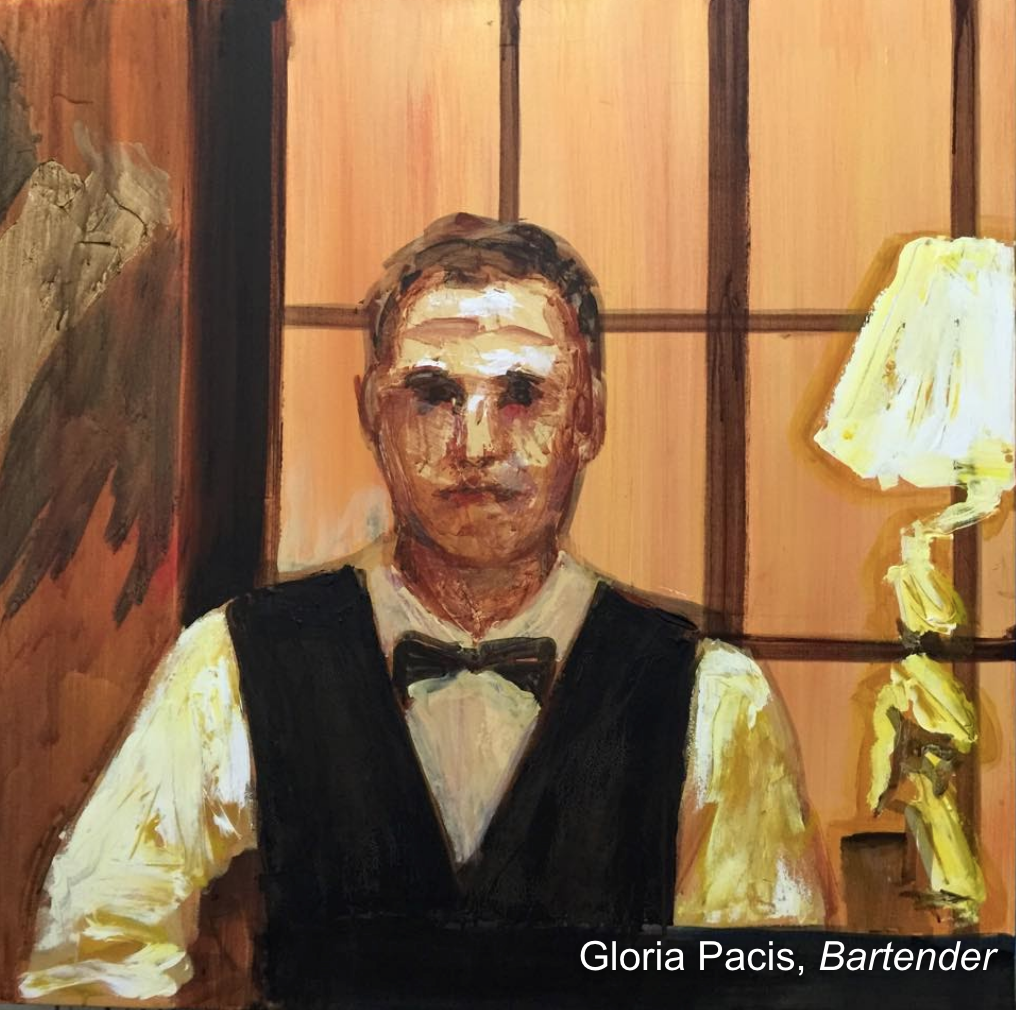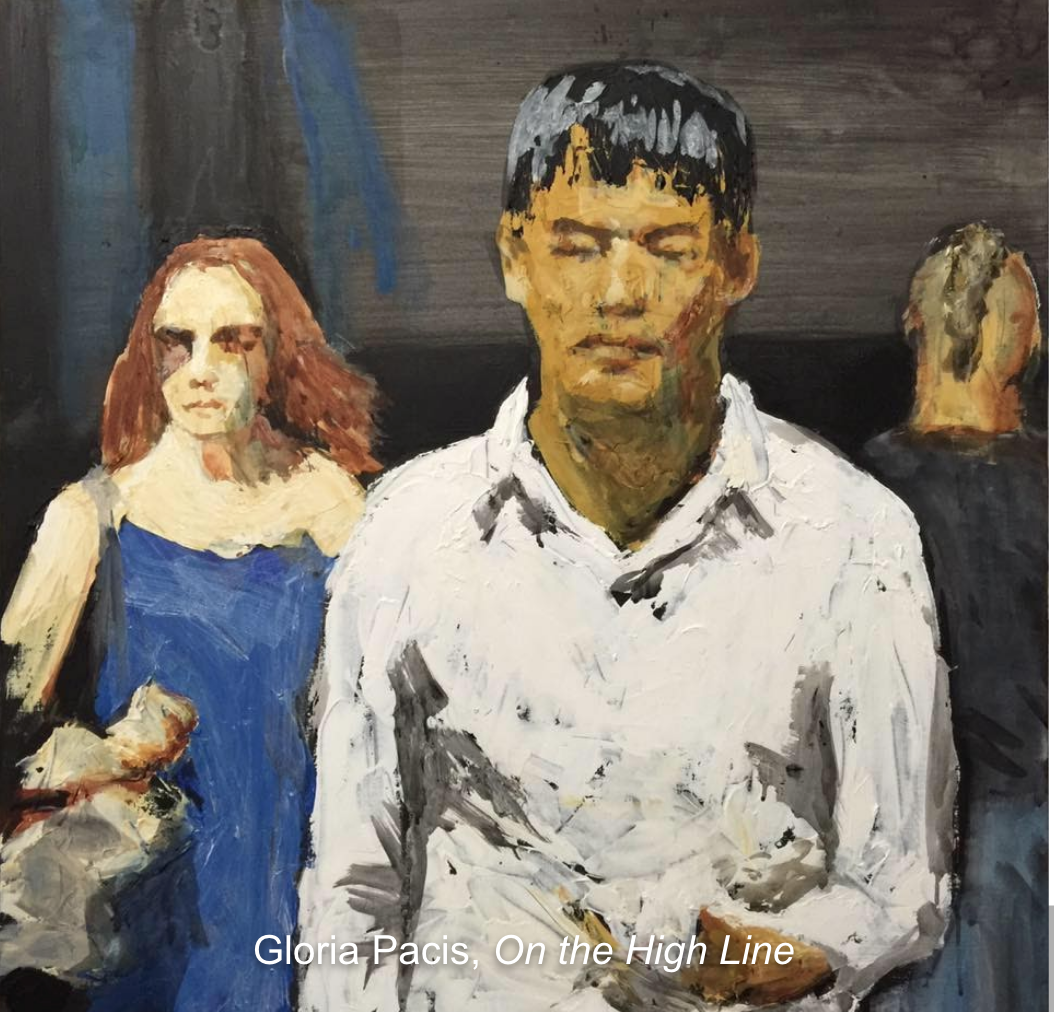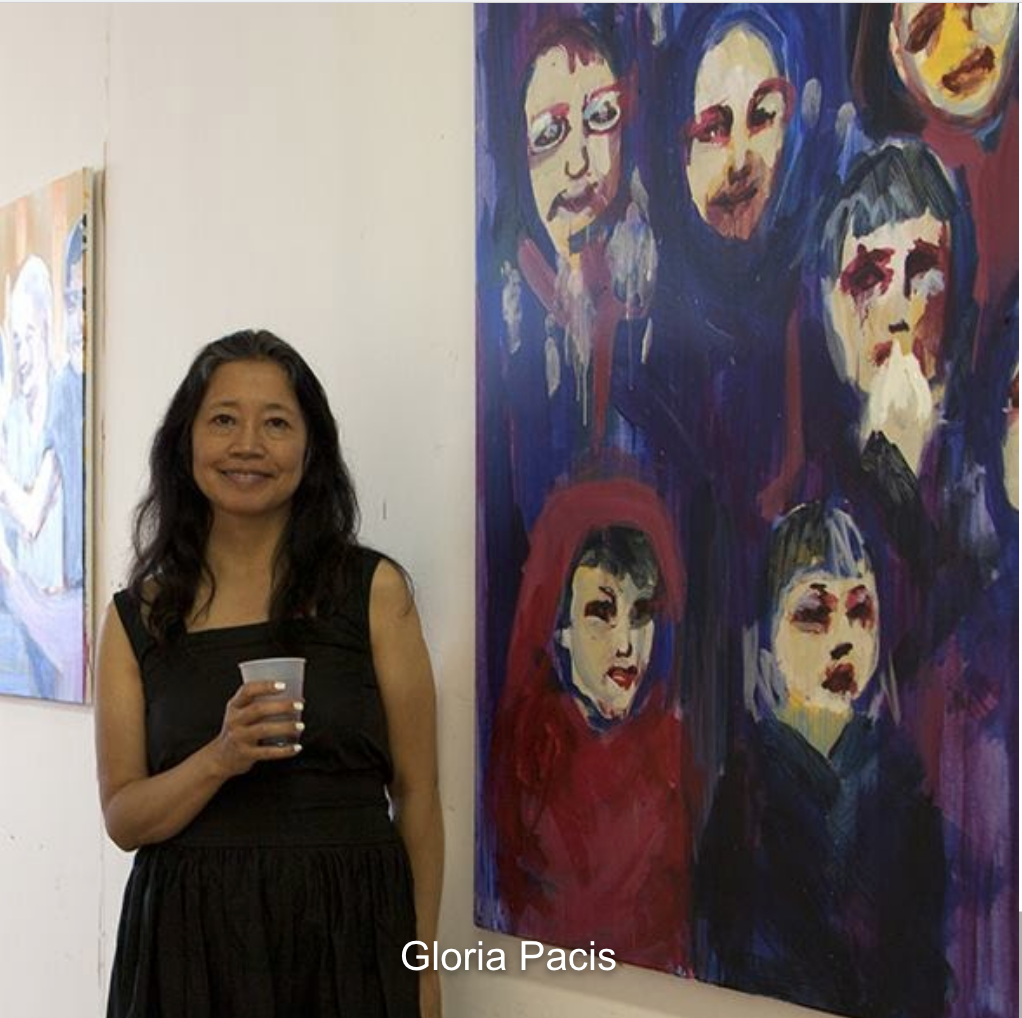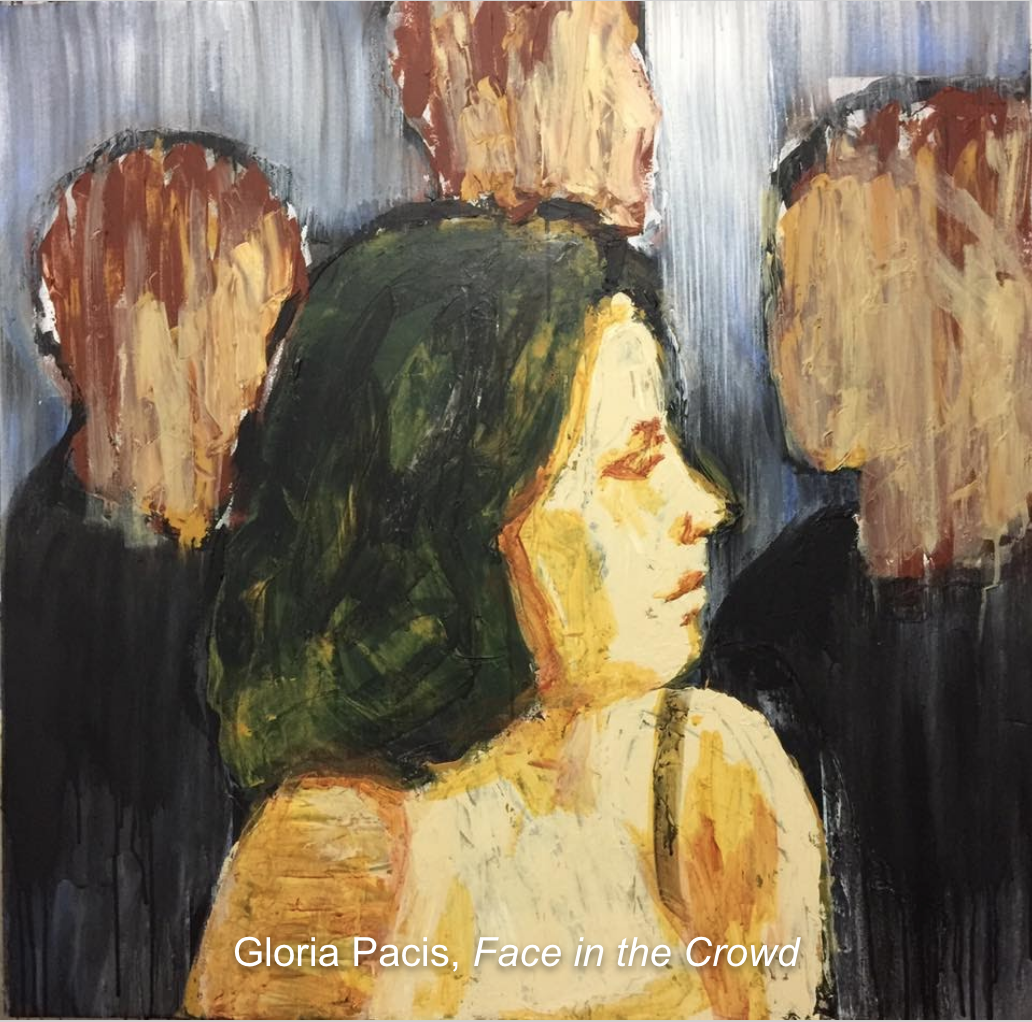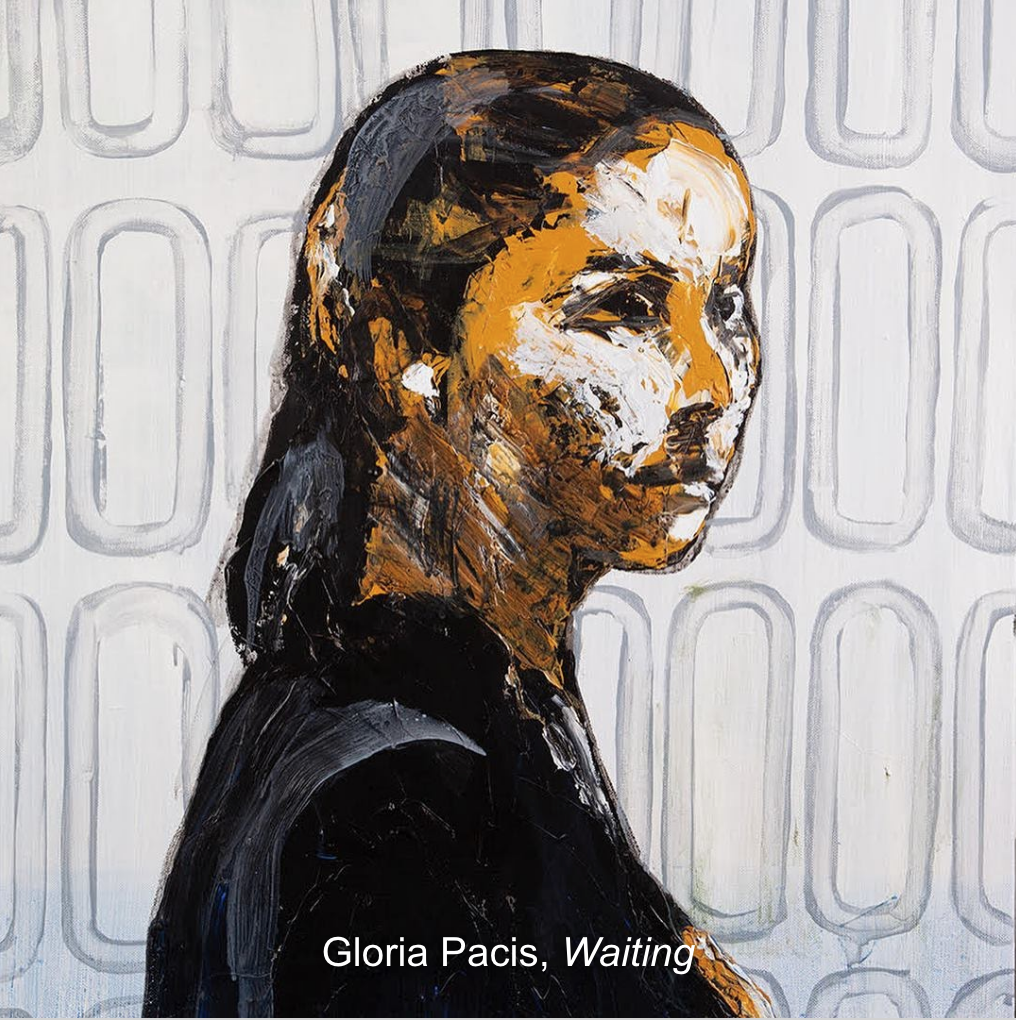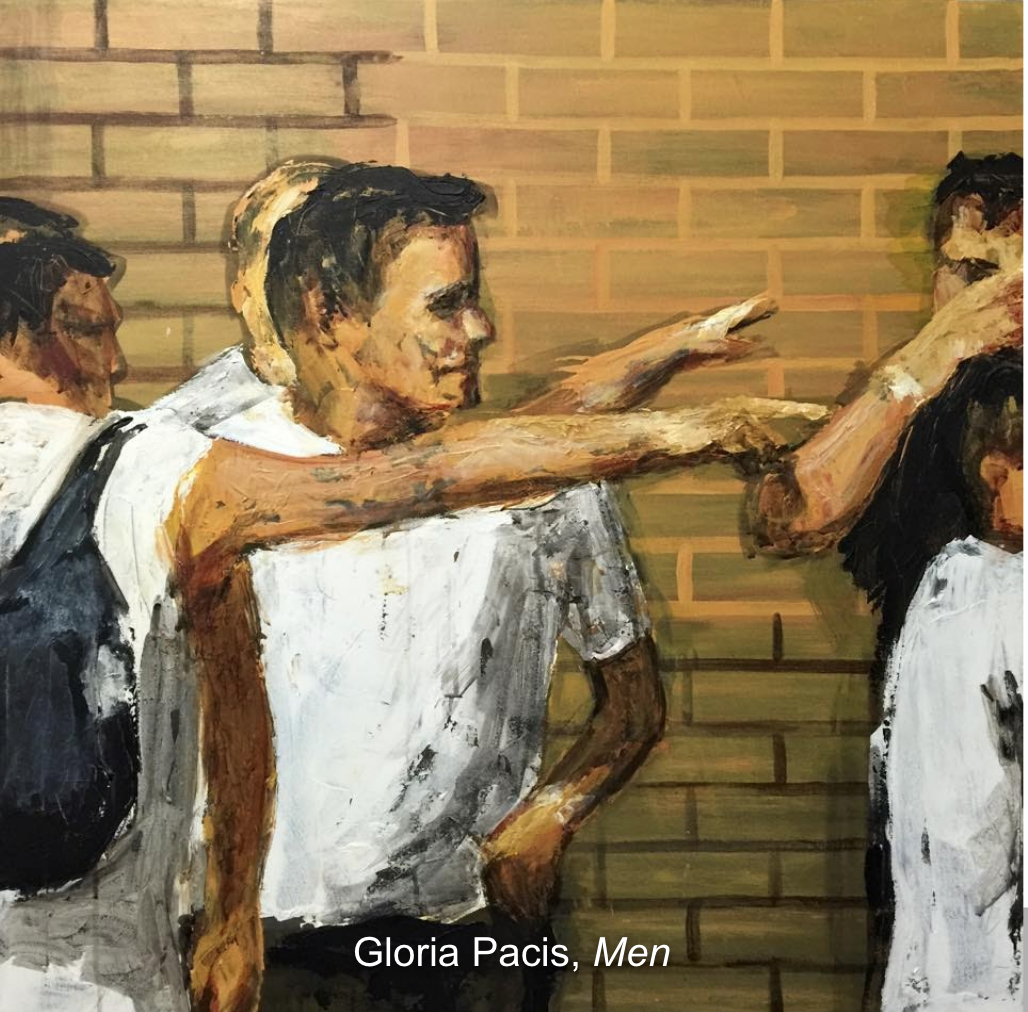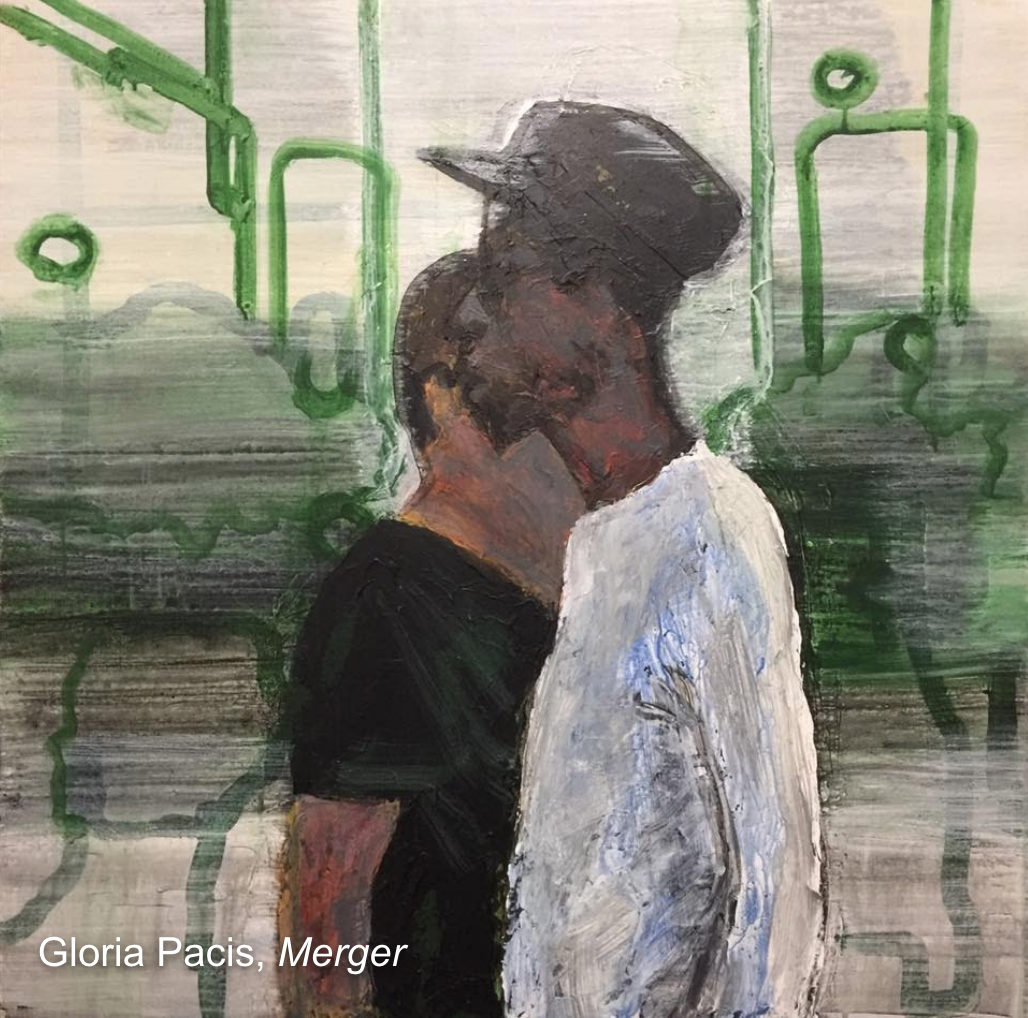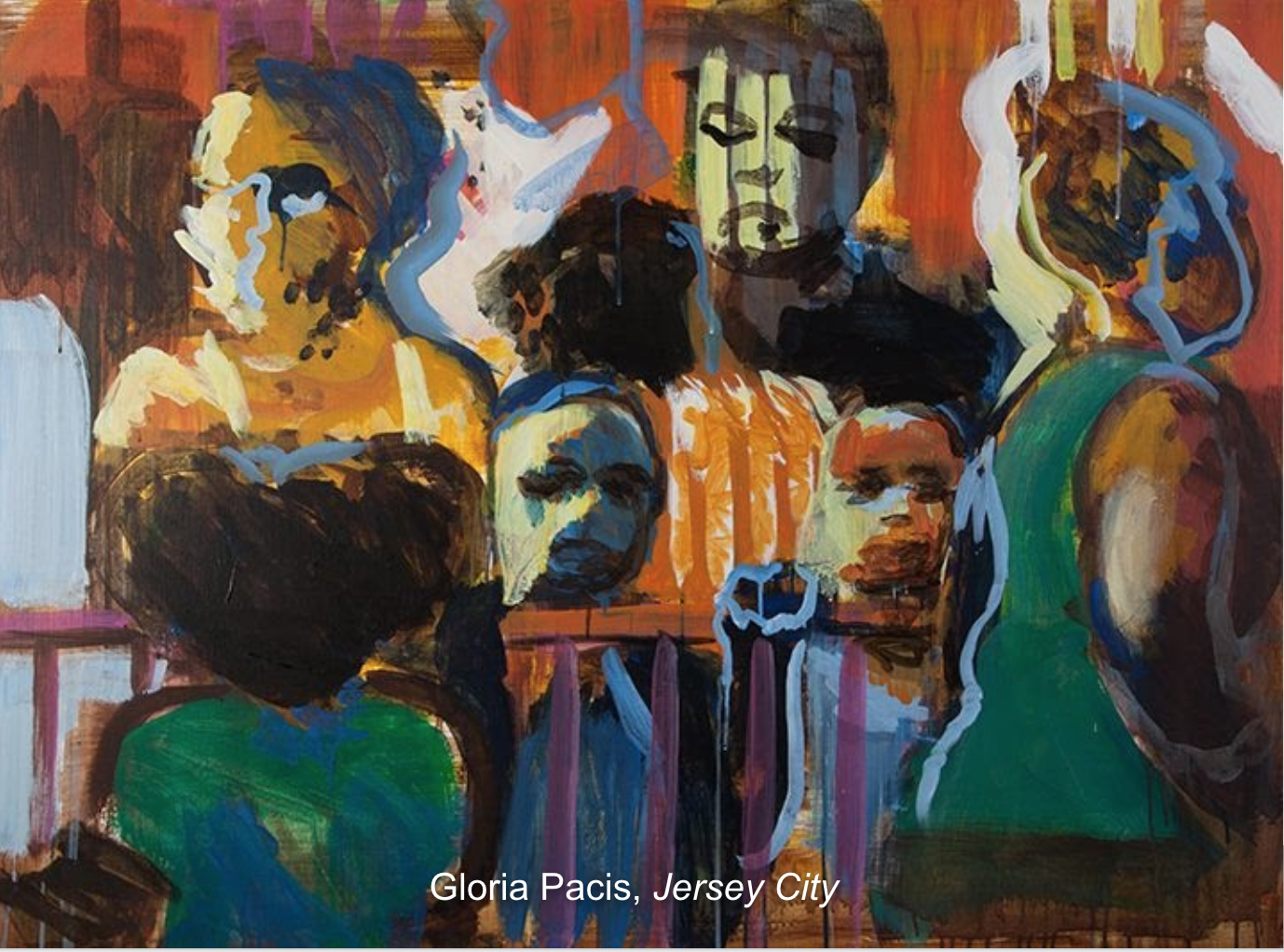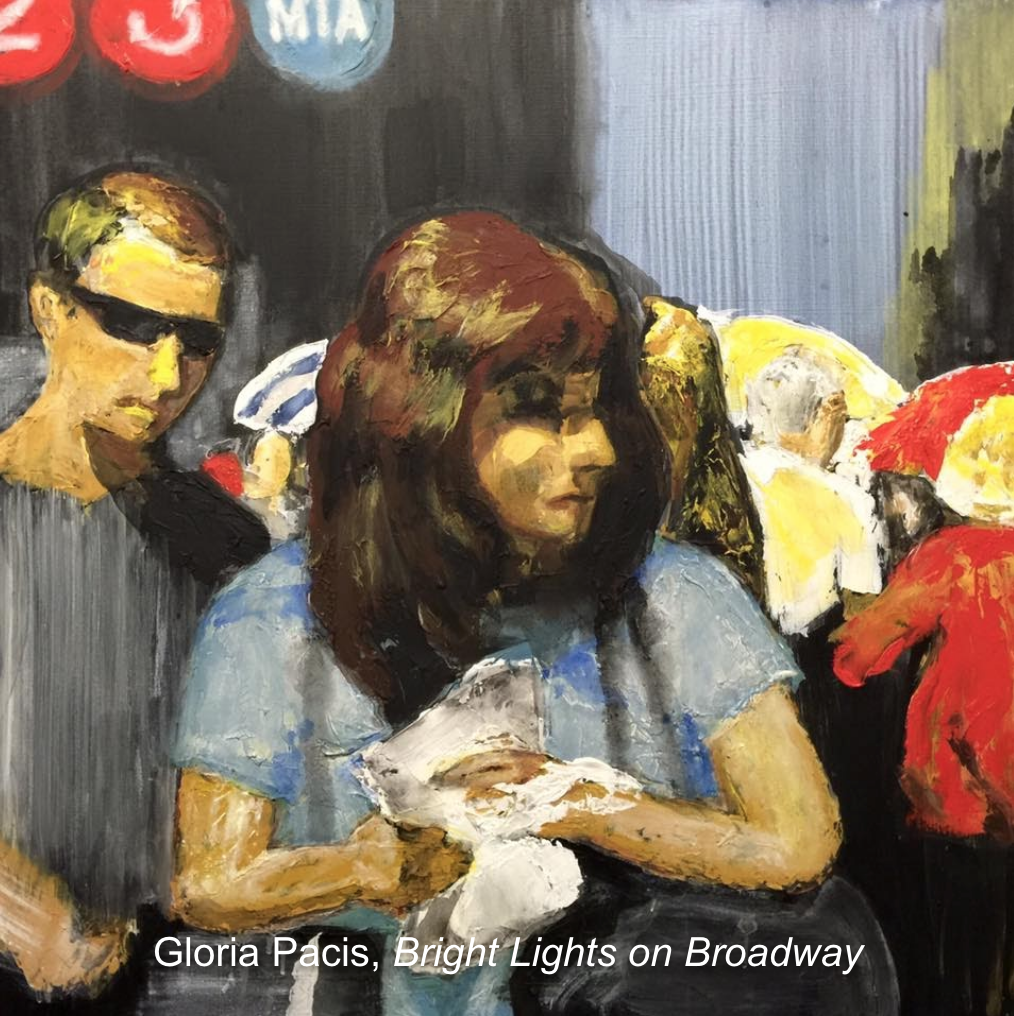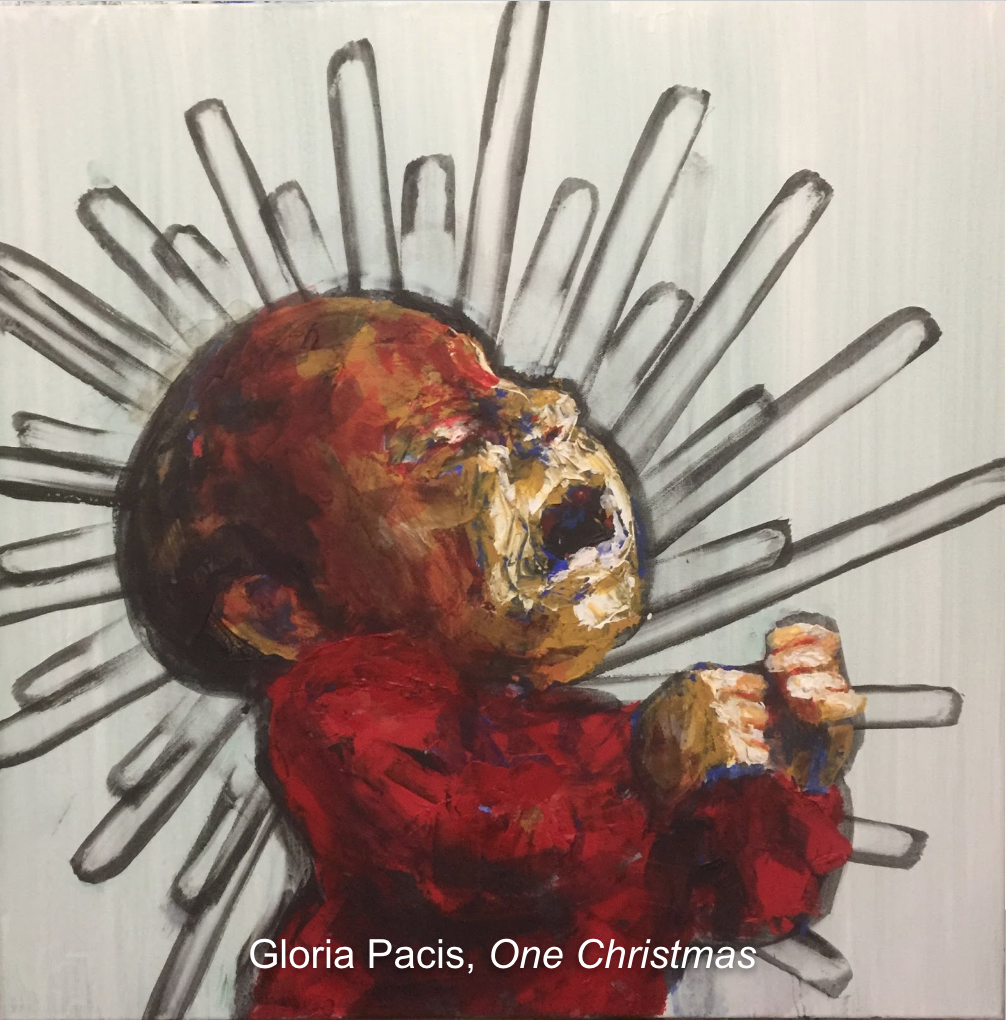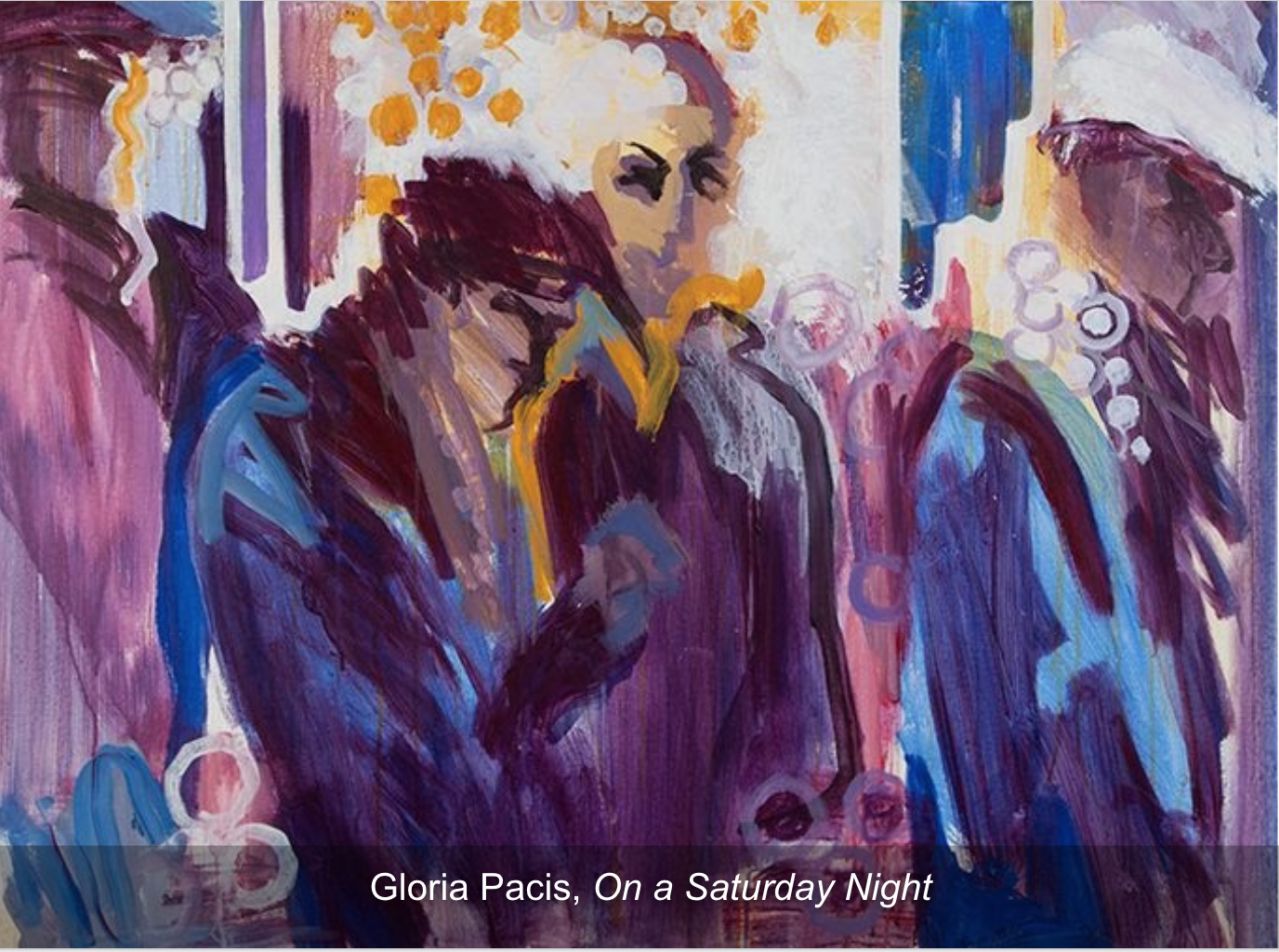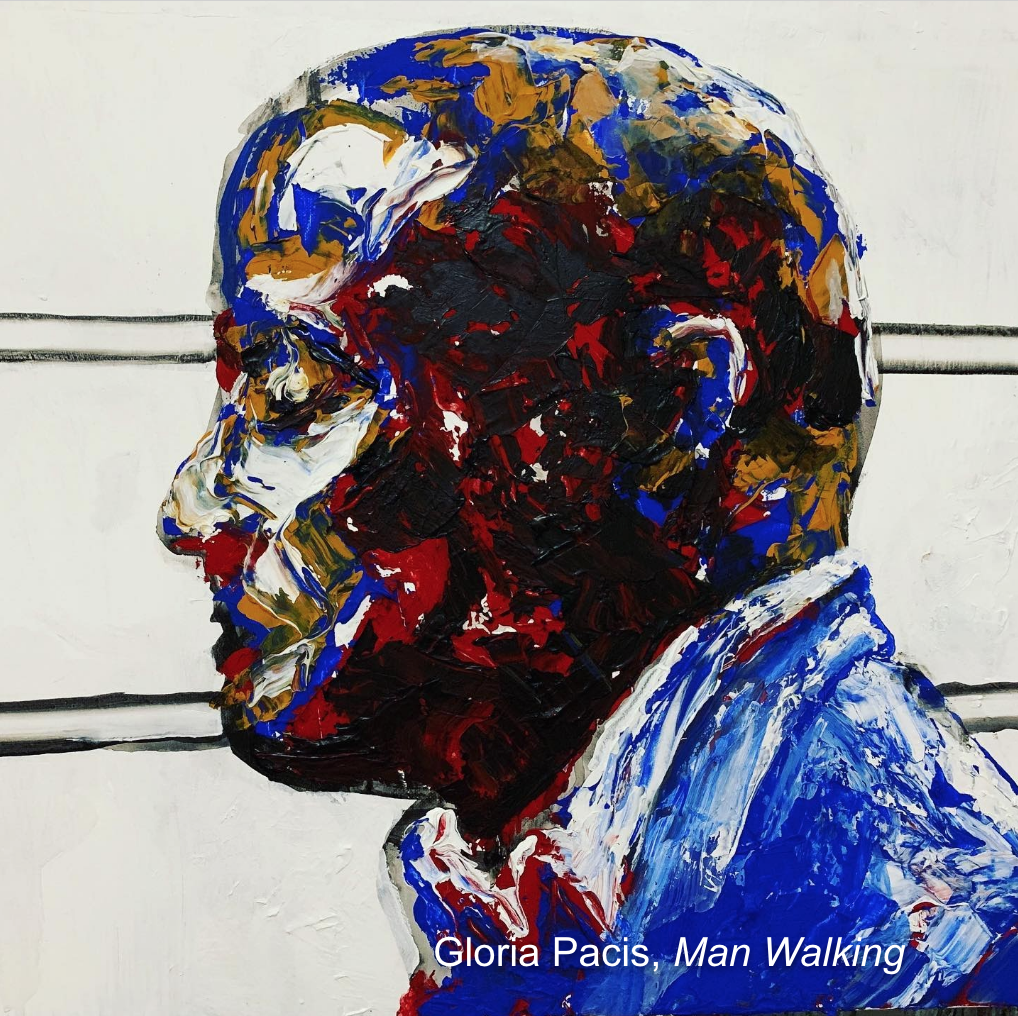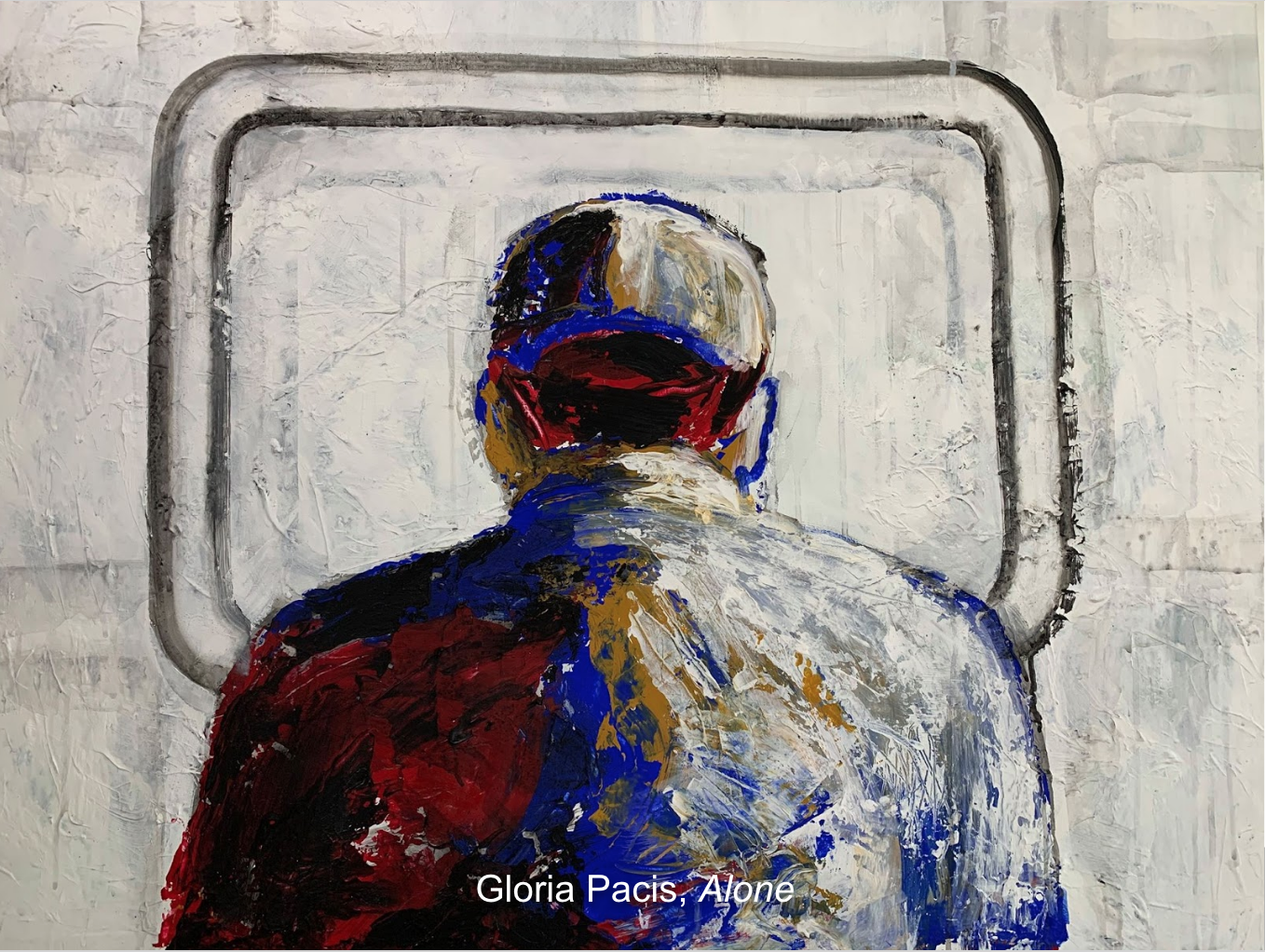Gloria Pacis (born 1953 in Seattle) is a painter dividing her time between New York City and Hoboken, where she has her studio. She received her BFA from the University of Washington in 1976. She credits her years working as a set designer and scene artist for the dramatic, character-based elements of her paintings. She has participated in group exhibitions at public institutions and universities, including Wing Luke Museum, Henry Art Gallery, and Seattle Center Art Museum, where her work was chosen to showcase International Women’s Day. She has designed sets for many leading theatres, including notable productions of A Christmas Carol, Hamlet, The Doctors Dilemma, Hedda Gabler, and Salome.
If Goya were alive, dividing his time between Harlem and Hoboken, this is what he might be painting today. I’m talking about Goya’s later Pinturas negras, not the earlier portraits of nobility he did to pay the bills. Gloria Pacis’ paintings are by turns haunting, tortured and beautiful. A sunny painting of a woman in dark glasses and a swimsuit, called simply Barcelona, recalls the beauty of that city of seven beaches, as well as the danger of the place where pickpocketing is the local sport.
Pacis, however, seems to be unaware of the edginess of her paintings, which adds to their power. She isn’t trying to hitch a political hot topic to her art or lose viewers with buzzwords. She is first and foremost a painter and her art explains itself. I was surprised when she told me during a recent interview at her studio in the Monroe Arts Centre, a space she shares with the artist Ed Tadiello, that she wants her paintings to show the connectedness between people. And on second examination, this is what her paintings do. Even as they depict policemen standing on a New York street corner––a visitor to her Artists of Asia show in the Bethune Center in Jersey City told me he found it hard to tell if the policemen were “smiling or sneering.” Or a bartender staring at the viewer, waiting for your order. Or a woman in Moscow standing in Red Square (which Pacis visited on her way back from a recent trip to Europe). All her paintings seem caught between this moment of confrontation and quiet contemplation. There are also interesting things going on with texture, light drizzles of watery paint over heavy impastos which aren’t always visible in photos of her work.
THE CREATIVE PROCESS
What is your approach to painting people?
GLORIA PACIS
When I’m doing artwork, it’s about the only time I get to forget that I’m a woman, that I’m Asian, and I belong to a certain social class. These things that define me in my waking life disappear when I’m painting. In a certain sense, figurative artists – which is what I am – at the moment of painting become the person they’re painting. I mean, they have to empathise with the person in order to capture an expression, a mood, so that’s why I feel distinctions of gender disappear.
THE CREATIVE PROCESS
You often work from photographs you take, and yet your art vibrates with a spontaneous energy.
PACIS
I try to get to this raw place where I feel a painting boiling up within me and get it painted in the same day. I’ll add touches later, sure, but it’s very much about feelings for me. I play with thick impasto areas painted with a palette knife and thin washes over them.
THE CREATIVE PROCESS
There is rarely romance to your pictures. I feel you are painting things as they are, not as you wish them to be.
PACIS
It’s what I see every day. Life is hard for most people. At the same time, we each live in imaginative worlds. We have inner lives and inner struggles and maybe this comes out in my paintings.
THE CREATIVE PROCESS
It’s disturbing, sometimes. I saw a painting of a baby crying. All these vivid reds and sharp contrasts. It was almost like it was possessed.
PACIS
That’s my granddaughter, but I think of it as a loving portrait.
THE CREATIVE PROCESS
Life is not easy, as you say, even for children.
PACIS
I think especially for children. I was lucky to have a childhood with a lot of freedom, but children today are constantly told about all these dangers. We feared other things, the atomic bomb, those kind of things, but not our neighbors, not going to school or going outside without a mask.
THE CREATIVE PROCESS
People in masks are in your recent paintings.
PACIS
How could they not be? But it’s moments of struggle paired with moments of grace. In my last one, a woman is wearing a mask, but she’s holding a flower. She’s looking for beauty where she can find it.
Untitled
Acrylic on Canvas, 36”x36”
Untitled
Acrylic on Canvas, 36”x36”
Year of Loving Dangerously
Acrylic on Canvas, 48”x36”
Love and Fear
Acrylic on Canvas, 48”x36”
Separate and Together
Acrylic on Canvas, 48”x36”
Tinker, Taylor, Spy
Acrylic on Canvas, 48”x36”
Untitled
Acrylic on Canvas, 40”x30”
Untitled
Acrylic on Canvas, 36”x48”
Untitled
Acrylic on Canvas, 36”x36”
2020
Acrylic on Canvas, 48”x36”
Conductor
Acrylic on Canvas, 36”x48”
The Virus
Acrylic on Canvas, 30”x40”
Untitled
Acrylic on Canvas, 40”x30”




